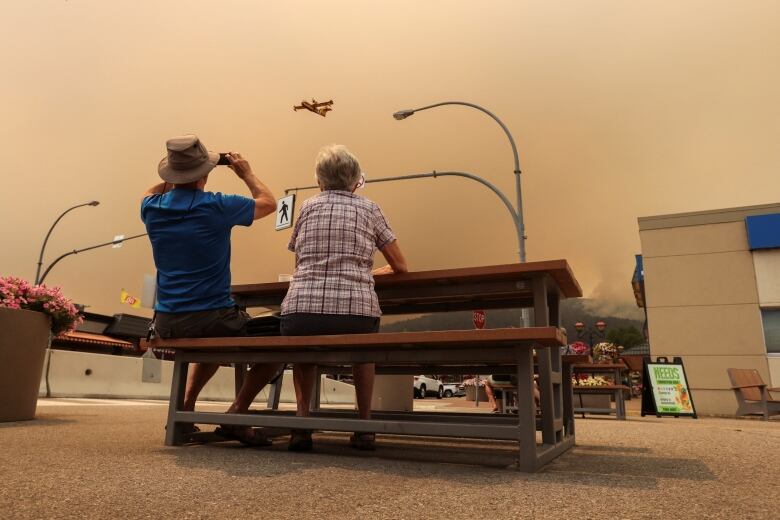Another heat wave is coming to B.C. It's time to plan how you're going to stay cool, officials say
Temperatures aren't expected to reach 2021 heat dome levels, but could hit high 30s in some areas

A significant heat wave expected to hit British Columbia early next week has led provincial authorities to ask people to take precautions.
Provincial Health Officer Dr. Bonnie Henry said while the temperatures won't approach the extremes of the 2021 heat dome, the prolonged spell of hot weather in the forecast will increasethe risk of heat illness.
"It's the accumulated stress of heat over time, that's why we need to be concerned," she said.
Temperatures are expected to reach the high 20s to high 30s, depending on location, with the warming trend starting Sunday on Vancouver Island and the South Coast before moving east.
The heat isn't expected to be anywhere close to the extremes of two years ago because the summer solstice has passed and shorter days and longer nights allow for more cooling to take place.
Minister of Emergency Management and Climate Readiness Bowinn Masaid local officials have been alerted and are preparing community supports, including setting up public cooling centres.
She asked that people monitor the indoor temperature of their home.
"Indoor temperatures of 31 C or higher can be dangerous, especially for people who are more vulnerable to heat. As part of your preparations, it's important that you identify a space outside of your home where you can cool down should temperatures inside your home become unsafe," she said.
The B.C. Coroners Service confirmed last month it is investigating three potential heat-related deaths from earlier in the summer.
In 2021, 619 people died from the heatduring late June and early July, when temperatures rose well above 40 C in parts of the province.

'Unprecedented' drought
Ma also sounded the alarm once again aboutB.C.'s "unprecedented" drought and the need for people to conserve water.
Of B.C.'s 34 water basins, 28 remain at the most extreme drought levels of 4 or 5. Last year at this time only a few water basins were at Level 2, while in 2021, it wasn't until the end of September that a single basin reached Level 5.
"This level of extreme drought has never been seen in the province before," she said.

Around 400 wildfires burning across B.C.
The wildfire situation in the province is holding steady with crews across B.C. keeping a close eye on the backcountry after recent lightning storms raised the potential for smouldering fires to erupt before the next hot spell arrives.
Less than five millimeters of rain fell in parts of southern and southeastern B.C., where wildfire danger ranges from moderate to extreme and several blazes have resulted in evacuations or evacuation alerts.
That includes two separate, nearly month-old wildfires on the east and west sides of Adams Lake, north of Chase. The B.C. Wildfire Service says while evacuation orders from both fires still cover about 100 properties, power has now been restored to the evacuated area on the east side of the lake.
West of Lillooet, evacuation orders have ended for the Seton Portage and Shalath areas along Anderson and Seton lakes as crews make headway on the 46-square-kilometre Casper Creek wildfire, which has destroyed one property since it was sparked on July 11.
In northern B.C., heavy rain means the nearly 6,000-square-kilometre Donnie Creek fire, the largest ever recorded in the province, is no longer listed as a fire of note, but the wildfire service says it remains ranked as out of control.
It's one of roughly 400 fires burning across B.C., including about 200 considered to be out of control, while 12, such as the fires at Adams Lake and west of Lillooet, are listed as fires of note, meaning they remain threatening or highly visible.
with files from The Canadian Press












_(720p).jpg)


 OFFICIAL HD MUSIC VIDEO.jpg)
.jpg)



























































































